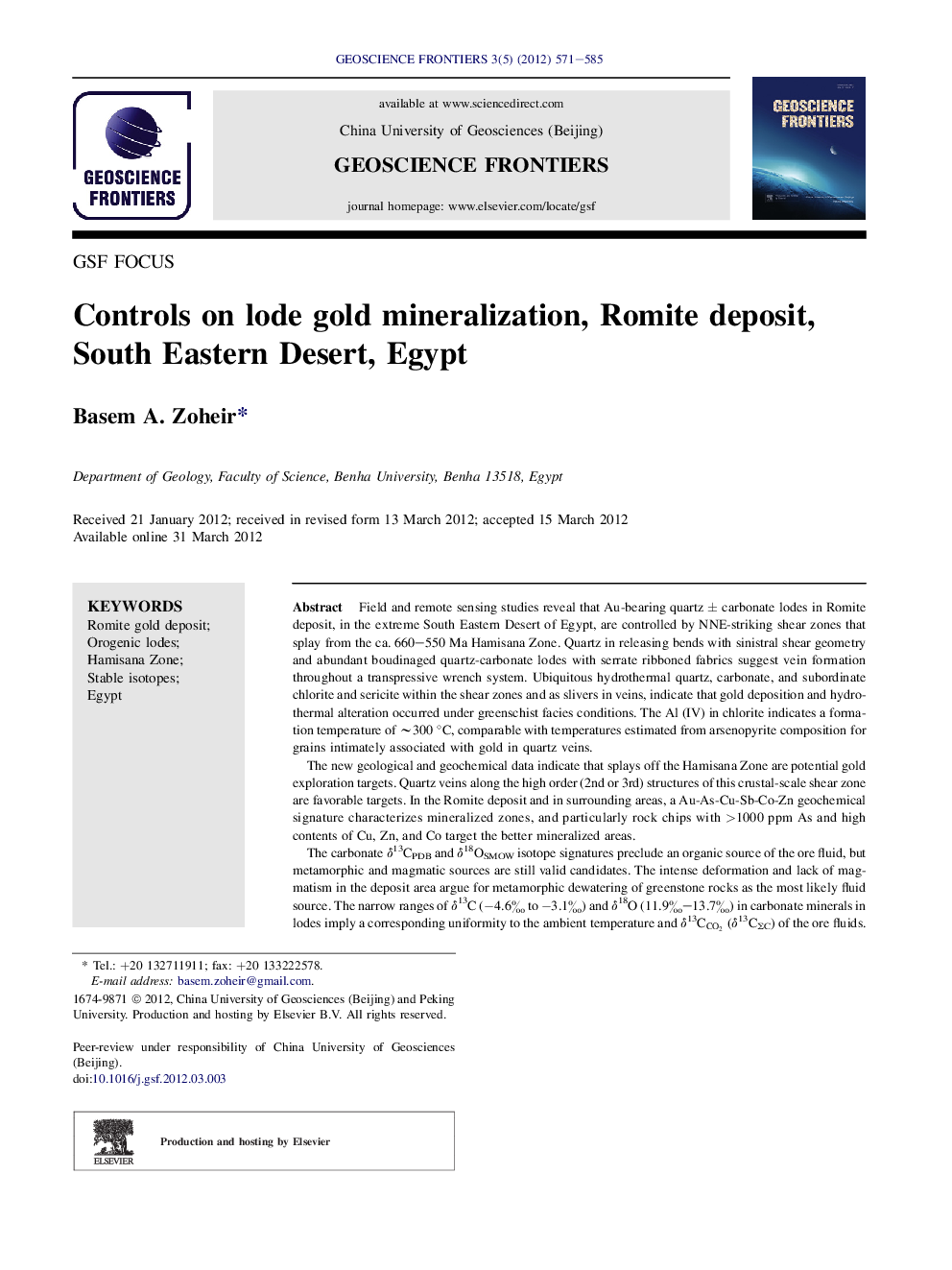| کد مقاله | کد نشریه | سال انتشار | مقاله انگلیسی | نسخه تمام متن |
|---|---|---|---|---|
| 4681831 | 1348877 | 2012 | 15 صفحه PDF | دانلود رایگان |

Field and remote sensing studies reveal that Au-bearing quartz ± carbonate lodes in Romite deposit, in the extreme South Eastern Desert of Egypt, are controlled by NNE-striking shear zones that splay from the ca. 660–550 Ma Hamisana Zone. Quartz in releasing bends with sinistral shear geometry and abundant boudinaged quartz-carbonate lodes with serrate ribboned fabrics suggest vein formation throughout a transpressive wrench system. Ubiquitous hydrothermal quartz, carbonate, and subordinate chlorite and sericite within the shear zones and as slivers in veins, indicate that gold deposition and hydrothermal alteration occurred under greenschist facies conditions. The Al (IV) in chlorite indicates a formation temperature of ∼300 °C, comparable with temperatures estimated from arsenopyrite composition for grains intimately associated with gold in quartz veins.The new geological and geochemical data indicate that splays off the Hamisana Zone are potential gold exploration targets. Quartz veins along the high order (2nd or 3rd) structures of this crustal-scale shear zone are favorable targets. In the Romite deposit and in surrounding areas, a Au-As-Cu-Sb-Co-Zn geochemical signature characterizes mineralized zones, and particularly rock chips with >1000 ppm As and high contents of Cu, Zn, and Co target the better mineralized areas.The carbonate δ13CPDB and δ18OSMOW isotope signatures preclude an organic source of the ore fluid, but metamorphic and magmatic sources are still valid candidates. The intense deformation and lack of magmatism in the deposit area argue for metamorphic dewatering of greenstone rocks as the most likely fluid source. The narrow ranges of δ13C (−4.6‰ to −3.1‰) and δ18O (11.9‰–13.7‰) in carbonate minerals in lodes imply a corresponding uniformity to the ambient temperature and δ13CCO2CCO2 (δ13CΣC) of the ore fluids. The calculated δ18OH2OOH2O values of 6.9‰–7.9‰ for ore fluids, based on δ18O values of vein quartz further suggest a likely metamorphic origin.
Figure optionsDownload as PowerPoint slideHighlights
► Silicified, NNE-SSW shear splays off Hamisana Zone are gold-bearing.
► Morphology and microstructures of vein quartz suggest syn-kinematic formation.
► Au endowment and alteration occurred under greenschist facies conditions.
► Romite gold deposit has a Au-As-Cu-Sb-Co-Zn geochemical signature.
► Stable isotopes of quartz and carbonate suggest a likely metamorphic ore fluid.
Journal: Geoscience Frontiers - Volume 3, Issue 5, September 2012, Pages 571–585